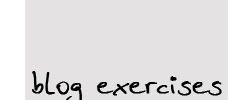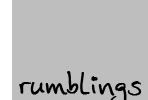Blog exercise THREE.
For this exercise we are to analyze a photograph (journalistic, social documentary, or commercial), write about how the photograph might be read by its target audience and explain its formal elements and how they work.
I chose this commercial photograph which is advertising candy.

I presume the target audience of this photograph would be anyone who eats candy. I believe the audience would read this photograph as happy, colorful, delicious and tempting.
Color.
This photograph uses a lot of colors, as depicted by the colorful sugar balls all over the model's lips. The use of many colors best depicts candy because candy usually comes in many colors. The use of colors can help to attract children, who typically are fans of candy.
The use of colors also helps to convey a sense of happiness. Bright colors convey a sense of cheer and joyousness. Associating colors and candy would lead the audience to perceive that eating candy would lead to happiness.

Here is another commercial photograph by m&m's, where candy is also portrayed as being colorful. Here, candy is being arranged to resemble the color wheel. This simple portrayal illustrates the importance of color in making candy attractive.
Soft lighting.
The photograph also makes use of soft lighting and a shallow depth of field. The areas around the mouth is blurred out. And the shadows under the nose and around the mouth are very soft. There is no harsh lighting or shadows created.
The effect of such soft lighting and shallow depth of field is so as to create a soft, dreamy feel to the photo. This is in line with the associations candy has. Candy is often used as a distraction from the real world. The sweet taste of candy distracts the eater from the bitterness of harsh reality. As such, candy is often associated with the fantasy world and children fairy tales such as Hansel and Gretel.

This photo also uses soft lighting and shallow depth of field to create a similar soft dreamy feeling. The hairs on the dandelion further illustrate the fluffy dreamy feel of the photograph.
Closed up, offering.
The photograph is a super close-up on the model's face, including only the mouth and part of the nose. As such, the audience is forced into viewing the model with a very close proximity.
The eyes of the model are not included in the photograph. Without direct gaze from the model, the photograph is said to be an "offer," where the model is offering an image to the audience, and encouraging the audience to either want or not want to become that image. In this case, the model is offering an image of eating candy. And this image is further made into a tempting one by the use of the tongue licking the candy.
Hence the photograph is offering an tempting image of eating candy, and is inviting the audience to want to be like the image. And the fact that it is up-close accentuates the offer, making the offer a more daring one.

Here is an example of an up-close offer photograph. The closeness of the model forces the audience to look closely into her features. The use of indirect gaze makes the photograph an offer, where the model is offering a state of mind, or mood, to the audience.
Labels: blog exercise







0 Comments:
Post a Comment
Subscribe to Post Comments [Atom]
<< Home